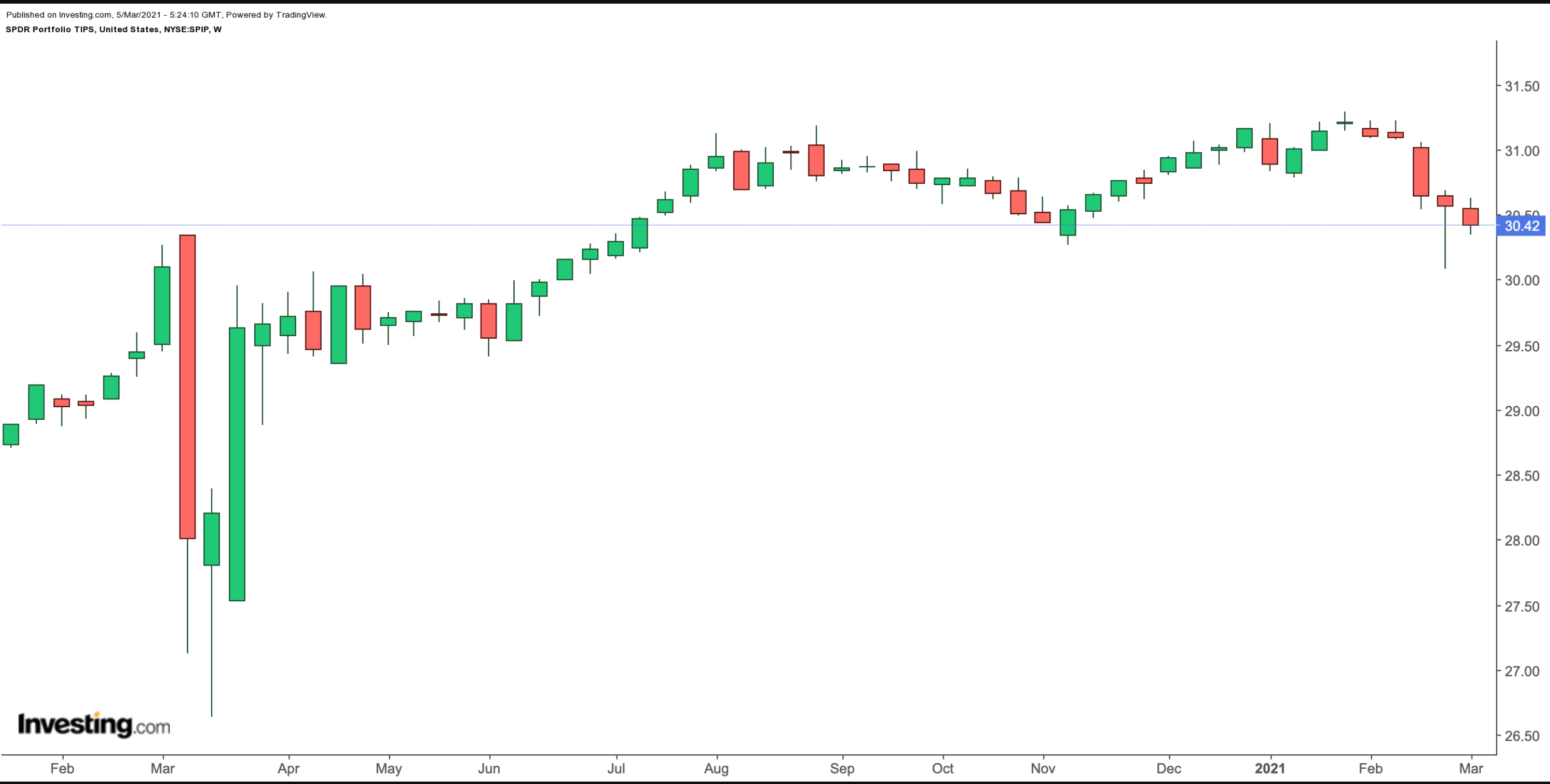Rising inflation expectations have, in part, been the catalyst behind the recent volatility on Wall Street. The rapid growth in the US money supply and increases in commodity prices have resulted in headlines about a return of inflation stateside.
Many on the other side of the Atlantic also believe inflation will sooner or later push up consumer prices in many countries. Therefore, today, we introduce an exchange-traded fund (ETF) that might be appropriate for investors who want to minimize the effects of inflation on their savings.
Inflation Matters
Recent research by the Federal Reserve Bank of New York highlights:
"In macroeconomic models, inflation expectations drive a wide range of decisions, including consumption, saving, borrowing, wage bargaining and, thus, have a direct impact on realized inflation. Inflation expectations, therefore, represent a key variable, closely monitored by policy-makers."
The Federal Reserve's mandate is for "maximum employment and price stability." At present, the Fed is committed to an inflation target of 2%.
A study by the International Monetary Fund (IMF) suggests in recent months, due to the effects of the pandemic on consumption patterns, an "[u]nder-weighting of rising food prices and overweighting of falling transport prices" might have led to an underestimation of inflation.
Put another way, inflation could already be higher than what the official consumer price (CPI) inflation metrics show. Is it possible that inflation is just not being measured properly?
There is also worry that additional fiscal support coupled with the reopening of economies might contribute to inflation in the coming months.
At present, equity market valuations overall presume record low-interest rates to persist for long periods of time. Broader markets have so far been encouraged by the Fed's commitment to easy-money policies. But if inflation were to show its head quickly, the Fed would need to change the outlook for policy.
In recent days, headlines suggest bond markets have begun to price in higher rates. Many readers are well versed with how bond returns are inversely related to yields. Thus, bond investors face interest rate risk. Meanwhile, investors might be reassessing stock valuations, too. A simultaneous decline in equity and bond markets means a period of increased volatility.
It is important to note that higher inflation levels may not be feared in all regions, including the Eurozone and Japan. Furthermore, a potential hike in inflation does not mean it will be permanent. And the effects of a temporary increase may not necessarily affect equity markets or investor portfolios significantly or for too long.
Those investors who may fear increased levels of inflation might buy inflation-protected bonds that invest in fixed-income securities. They increase coupon and/or principal payments at the rate of inflation.
Against this backdrop, let’s take a look at the following fund.
SPDR Portfolio TIPS ETF
Current Price: $30.42
52-Week Range: $26.64 - $31.29
Dividend Yield: 2.06%
Expense Ratio: 0.12% per year
The SPDR Portfolio TIPS ETF (NYSE:SPIP) gives access to US Treasury inflation-protected securities (TIPS). The fund's objective is to provide a hedge against the erosion of purchasing power because of inflation. It started trading in May 2007, and net assets stand at $2.4 billion.

The US Department of the Treasury Bureau of the Fiscal Service cites:
"The principal of a TIPS increases with inflation and decreases with deflation, as measured by the Consumer Price Index. When a TIPS matures, you are paid the adjusted principal or original principal, whichever is greater. TIPS pay interest twice a year, at a fixed rate. The rate is applied to the adjusted principal; so, like the principal, interest payments rise with inflation and fall with deflation."
Many individuals buy TIPS bonds as a way to maintain their purchasing power. When the CPI increases, the principal value of a TIPS rises, too. TIPS bonds have the full backing of the US government. Therefore, investors know they will receive all of the interest and principal that's due.
A fund like SPIP invests in a basket of TIPS with various maturities. The ETF, which tracks the Bloomberg Barclays US Government Inflation-Linked Bond Index, currently has 42 holdings. Their maturities range from 2022 to 2051. However, bond funds have no specific maturity dates, which sets them apart from investing in a single TIPS.
Over the past 12 months, SPIP is up 2.4% and hit a record high on Jan. 29. So far in the year, however, it is down close to 1.8%. In fact, since the record high, the fund has lost close to 3% in about a month.
This rapid change in price shows that the value of an ETF like SPIP can fluctuate significantly in a matter of weeks. Therefore, despite their popularity, TIPS ETFs could be volatile in the short run. Potential investors might also consider talking to a financial adviser regarding the suitability of TIPS ETFs for their risk/return profiles.
Bottom Line
Higher inflation levels could become part of the economic reality in 2021 and beyond. In addition to SPIP, other funds could also appeal to readers looking for hedges against inflation. They include:
- Goldman Sachs Access Inflation Protected USD Bond ETF (NYSE:GTIP);
- FlexShares iBoxx 5-Year Target Duration TIPS Index Fund (NYSE:TDTF);
- Invesco DB Commodity Index Tracking Fund (NYSE:DBC);
- IQ Real Return ETF (NYSE:CPI);
- Quadratic Interest Rate Volatility and Inflation Hedge ETF New (NYSE:IVOL);
- Schwab U.S. TIPS ETF™ (NYSE:SCHP);
- SPDR® Gold Shares (NYSE:GLD).
